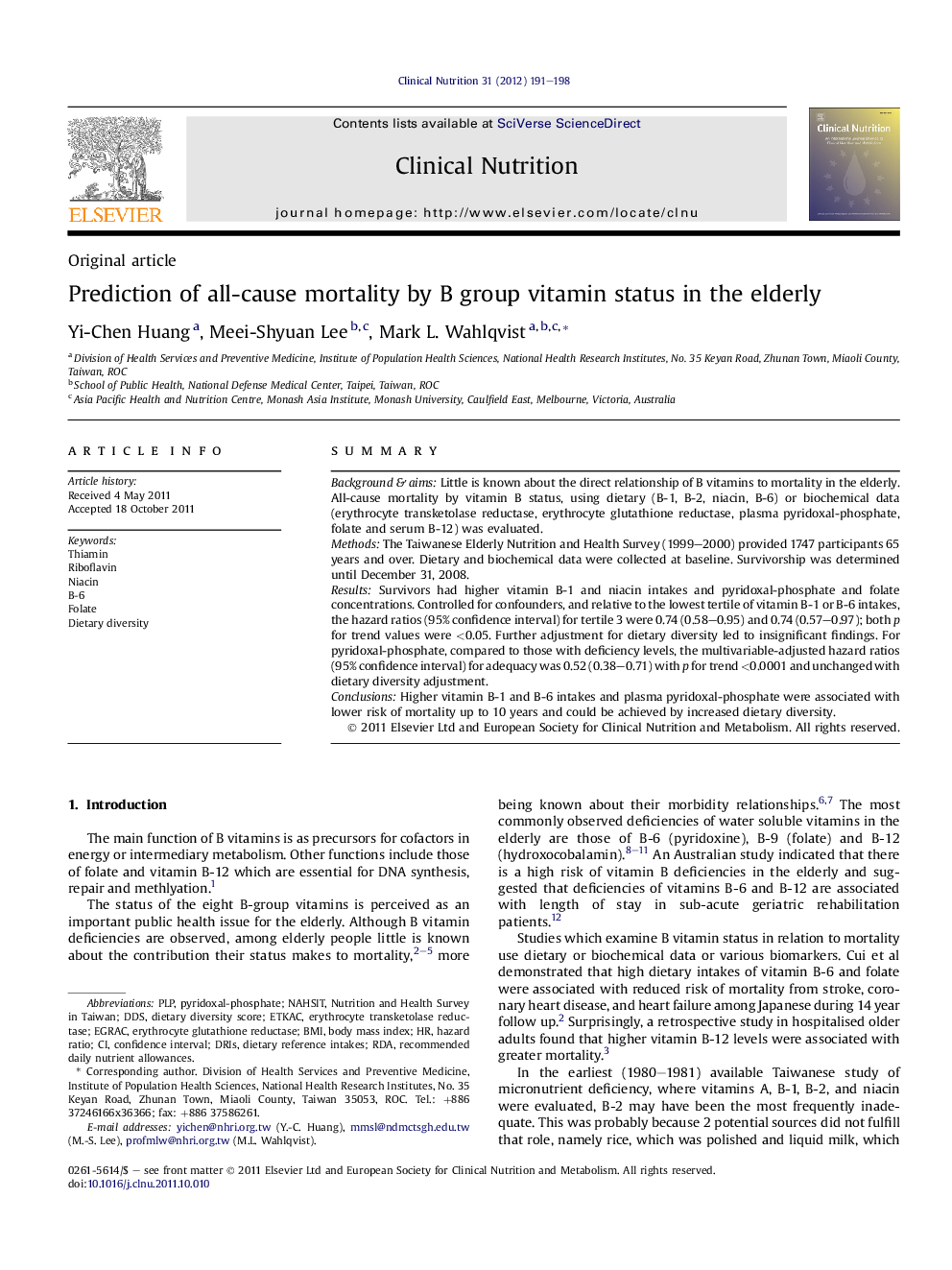| Article ID | Journal | Published Year | Pages | File Type |
|---|---|---|---|---|
| 5871924 | Clinical Nutrition | 2012 | 8 Pages |
SummaryBackground & aimsLittle is known about the direct relationship of B vitamins to mortality in the elderly. All-cause mortality by vitamin B status, using dietary (B-1, B-2, niacin, B-6) or biochemical data (erythrocyte transketolase reductase, erythrocyte glutathione reductase, plasma pyridoxal-phosphate, folate and serum B-12) was evaluated.MethodsThe Taiwanese Elderly Nutrition and Health Survey (1999-2000) provided 1747 participants 65 years and over. Dietary and biochemical data were collected at baseline. Survivorship was determined until December 31, 2008.ResultsSurvivors had higher vitamin B-1 and niacin intakes and pyridoxal-phosphate and folate concentrations. Controlled for confounders, and relative to the lowest tertile of vitamin B-1 or B-6 intakes, the hazard ratios (95% confidence interval) for tertile 3 were 0.74 (0.58-0.95) and 0.74 (0.57-0.97); both p for trend values were <0.05. Further adjustment for dietary diversity led to insignificant findings. For pyridoxal-phosphate, compared to those with deficiency levels, the multivariable-adjusted hazard ratios (95% confidence interval) for adequacy was 0.52 (0.38-0.71) with p for trend <0.0001 and unchanged with dietary diversity adjustment.ConclusionsHigher vitamin B-1 and B-6 intakes and plasma pyridoxal-phosphate were associated with lower risk of mortality up to 10 years and could be achieved by increased dietary diversity.
